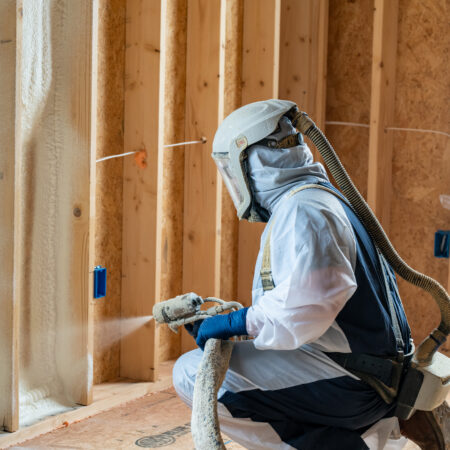Boosting Energy Efficiency: How Building Envelope Innovations, Like Spray Foam Insulation, Are Key to Solving Energy Challenges
 In our quest to tackle energy challenges, there’s a crucial conversation that needs more attention: enhancing energy efficiency through investing in building envelopes. This aspect is especially critical for homes and small businesses, as it greatly influences the overall efficiency, safety, strength, and comfort of a structure. Recent extreme weather events, the strain on our power grid, and soaring energy costs underscore the importance of effective insulation in our buildings.
In our quest to tackle energy challenges, there’s a crucial conversation that needs more attention: enhancing energy efficiency through investing in building envelopes. This aspect is especially critical for homes and small businesses, as it greatly influences the overall efficiency, safety, strength, and comfort of a structure. Recent extreme weather events, the strain on our power grid, and soaring energy costs underscore the importance of effective insulation in our buildings.
Insulation might not be the first thing we think about, but it’s a central part of the energy efficiency dialogue. It’s a hidden but significant factor in reducing energy demands. The U.S. Department of Energy highlights that air leaks can result in a 40% energy loss in heating and cooling a typical home. Proper building envelope design is vital to prevent such wastage. An EPA official emphasized that optimizing insulation is not only key to a comfortable home but also to lowering energy bills. Moreover, the Department of Energy’s Lawrence Berkeley National Laboratory (LBNL) reports that energy-efficient buildings are essential for cutting energy costs and emissions.
Emerging innovations in building materials, such as spray foam insulation, are making a notable impact on emissions in building construction. A U.S. Department of Energy report indicates that “energy-related building emissions are declining even with an increase in the number of homes and commercial buildings.” This positive development is largely attributed to enhanced building envelope efficiency. Additionally, the use of spray foam insulation is recognized for its effectiveness in reducing greenhouse gas emissions. The American Chemistry Council estimates that if spray foam insulation replaces other products, we could cut U.S. greenhouse gas emissions by 3.5% annually, equivalent to taking nearly 39 million vehicles off the roads each year.
This is encouraging for new constructions, but to fully realize the potential of building envelopes in reducing our energy footprint, we must also focus on retrofitting older buildings with the latest building materials. The good news for homeowners is the immediate benefits of retrofitting. The EPA in 2022 estimated that retrofitting homes could halve energy usage. The Energy Department suggests that every dollar spent on retrofitting or weatherizing could yield a $2.78 return in savings. Spray foam, a revolutionary building material, can contribute to up to 15% savings on heating and cooling costs. Furthermore, homeowners upgrading their insulation can benefit from the 25C tax credits, allowing them to receive up to $1,200 for sealing homes with spray foam insulation.
Spray foam insulation can transform your home, making it incredibly energy-efficient – likened to a Yeti Cooler. It serves as an all-in-one insulation and air barrier, cutting down energy usage, saving money, and offering a viable solution to our energy challenges.
While discussions about energy production, pipelines, and grids are essential, we must also prioritize reducing energy leakage and loss. This starts with focusing on our building envelope and the materials used in our walls and attics, a crucial part of the broader energy conversation.